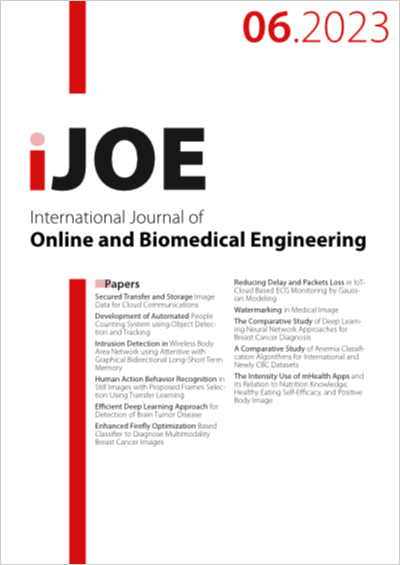Human Action Behavior Recognition in Still Images with Proposed Frames Selection Using Transfer Learning
DOI:
https://doi.org/10.3991/ijoe.v19i06.38463Keywords:
Human action, transfer learning, deep learning, CNN, VGG16, inceptionv3, xception, k-mean, keyframeAbstract
One of the most difficult challenges is recognizing human actions., especially in still images where there isn't much movement. Therefore, Using the transfer learning strategy, we suggested a technique for identifying human action., which consists of training some of the layers of deep learning techniques while freezing others. Also presented a way for data split, which is to choose some frames because we are working on a large dataset such as ucf-101, and this method is summarized by discovering the features for each frame, then clustering the elements, and then choosing a percentage of each cluster for training and test data. We used three techniques. They are vgg16, inceptionv3, and xception. The proposed models have been implemented on UCF-101 Dataset. Depending on three data split methods with the dataset, the random split method, and the proposed split method, the inceptionv3 achieved the highest accuracy. In contrast, the vgg16 achieved the least accuracy, and the accuracy of the xception was close to that of the inceptionv3. By comparing the size of the dataset, the proposed methods achieved good results: the vgg16 in the proposed split attained an accuracy of 92.5%, the inception v3 in the proposed split attained an accuracy of 98.12%, and the xception in the proposed split attained an accuracy of 95.16%. The VGG16 network is simple, so the VGG16 is less accurate. While the network in inceptionv3, xception, is more extensive and complex, the learning space is more significant, although the network size is more prominent in inceptionv3, xception. We only trained some blocks in the top layer
Downloads
Published
How to Cite
Issue
Section
License
Copyright (c) 2023 Mohammed Thamer, Prof. Dr. Ayad Rodhan Abbas

This work is licensed under a Creative Commons Attribution 4.0 International License.



